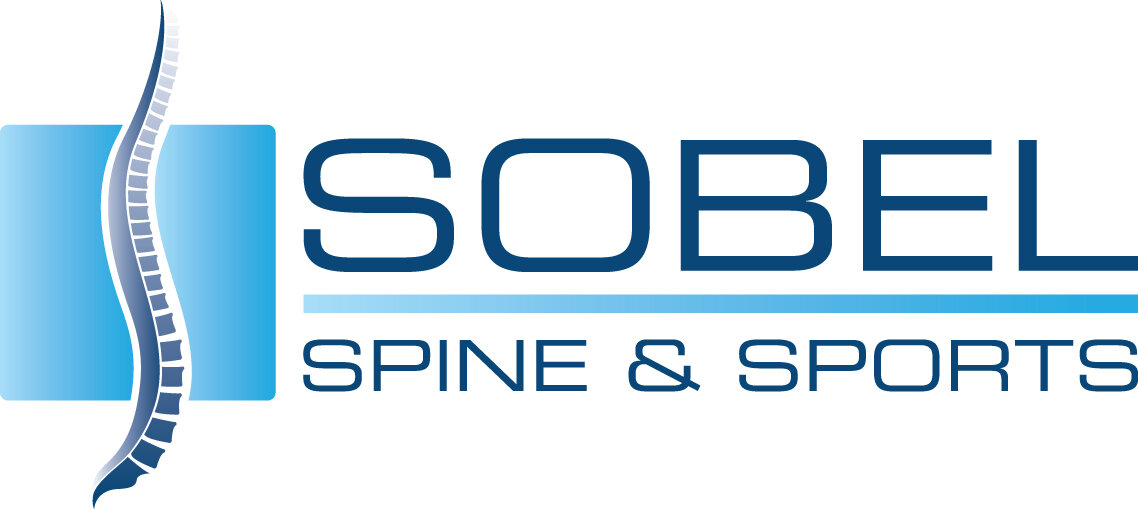Frozen Shoulder: Causes, Symptoms & Treatment Options
Adhesive capsulitis, more commonly known as frozen shoulder, is a painful condition that limits the movement of the shoulder joint and can significantly disrupt daily activities. At Sobel Spine and Sports, we help patients restore shoulder function with evidence-based treatments and personalized care plans.
This post explains what frozen shoulder is, how it develops, and the most effective treatment options available—so you can better understand what to expect and how to find relief.
What Is Frozen Shoulder?
Frozen shoulder occurs when the shoulder joint capsule thickens and tightens, restricting movement and causing pain. Over time, adhesions (bands of scar-like tissue) develop, which limit the joint’s flexibility and function.
Frozen shoulder typically progresses in three stages:
1. Freezing Stage – Pain develops and gradually worsens. Range of motion becomes limited (6 weeks to 9 months)
2. Frozen Stage – Pain may subside slightly, but stiffness persists (4 to 6 months)
3. Thawing Stage – Shoulder movement begins to improve gradually (6 months to 2 years)
Causes and Risk Factors
Frozen shoulder often develops without a clear cause, but several factors increase your risk:
Age 40 to 60 – Most common in this age group
Gender – More frequently affects women
Prolonged Immobilization – Post-surgical recovery or arm injuries
Medical Conditions – Diabetes, thyroid disorders, Parkinson’s disease, and stroke
Early identification and mobility-focused care are key to preventing long-term limitations.
Symptoms of Frozen Shoulder
Patients typically report:
A deep, aching pain in the shoulder and upper arm
Increased pain at night or with overhead movement
A noticeable reduction in range of motion, especially external rotation
Difficulty with daily tasks like dressing, reaching behind the back, or lifting objects
Diagnosis at Sobel Spine and Sports
At Sobel Spine and Sports, we begin with a detailed physical examination and review of your medical history. Diagnosis is primarily clinical, but imaging (such as X-rays or MRI) may be used to rule out other causes like rotator cuff tears or arthritis.
Treatment Options
1. Physical Therapy
Guided stretching and range-of-motion exercises are essential to restore shoulder function. Our team customizes your therapy plan based on your stage of frozen shoulder and pain tolerance.
2. Anti-Inflammatory Medications
NSAIDs like ibuprofen can reduce pain and swelling. For more persistent symptoms, oral corticosteroids may be prescribed.
3. Ultrasound-Guided Corticosteroid Injections
Targeted injections under ultrasound guidance reduce inflammation and improve motion—particularly effective in the early stages of frozen shoulder.
4. Joint Hydrodilatation
This minimally invasive technique involves injecting sterile fluid into the joint capsule to gently stretch it. Often combined with therapy.
5. Surgical Referral (If Needed)
In rare, refractory cases:
Manipulation under anesthesia (MUA)
Arthroscopic capsular release
What to Expect During Recovery
Frozen shoulder recovery is often gradual. With consistent treatment and follow-up, most patients regain full function, although recovery may take several months. Patients with diabetes may experience a slower or less complete resolution.
At Sobel Spine and Sports, we provide ongoing support through every phase of recovery, including home exercise guidance.
Preventing Frozen Shoulder
Some cases can’t be avoided, but you can lower your risk by:
Keeping the shoulder active after surgery or injury (under supervision)
Managing chronic conditions like diabetes
Regularly performing stretching and mobility exercises
When to Schedule an Evaluation
If shoulder pain and stiffness are interfering with your daily activities, don’t wait for symptoms to worsen. Early diagnosis and treatment can shorten the course of frozen shoulder and prevent long-term complications
📞 Call Sobel Spine and Sports at 602-385-4160
📍 Conveniently located in Phoenix, Arizona
🗓️ Request your appointment today





